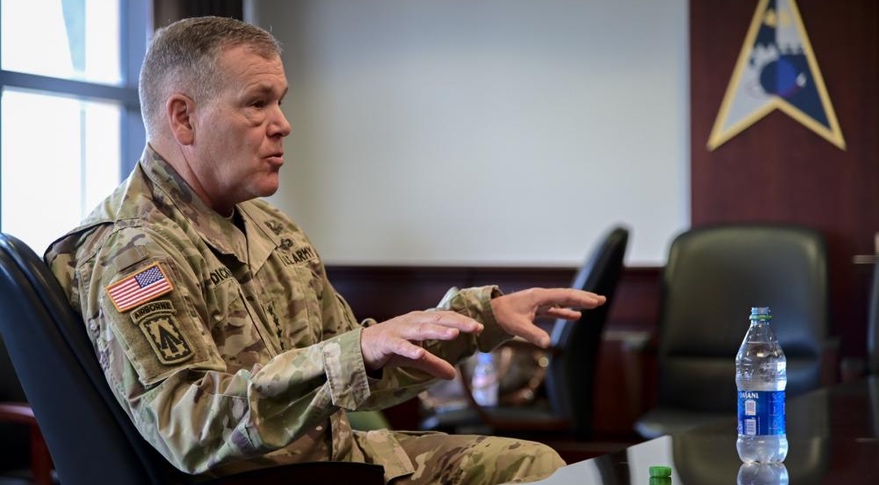WASHINGTON — As Artemis 1 nears its conclusion, U.S. Space Command is using the mission to highlight its role in supporting NASA, even as the space agency considers alternatives to some of those services.
The Orion crew capsule is scheduled to splash down at 12:39 p.m. Eastern Dec. 11 in the Pacific Ocean off the coast of Baja California. It will be recovered by a joint NASA/U.S. Navy team using the ship USS Portland, along with several helicopters and small boats.
The military forces involved in the recovery are coordinated by U.S. Space Command. “It’s one of the most visible mission sets within U.S. Space Command that we do, and it’s a pretty neat one,” said U.S. Army Gen. James Dickinson, commander of U.S. Space Command, in an interview at Patrick Space Force Base in Florida before the first Artemis 1 launch attempt in August.
For Artemis 1 and other missions, Space Command coordinates closely with NASA on schedules and requirements, he said. “They invite us and include us into their planning sessions, really from the very beginning,” he said of NASA, noting that discussions have already started for the Artemis 2 crewed mission, scheduled for no earlier than late 2024. “We go figure out what is feasible and come back with two or three different courses of action.”
Space Command then works with other combatant commands to identify the resources needed to support the mission, like the naval vessel that will be used for the Artemis 1 recovery. “You’ve got to be able to have a global reach and the fact that I’m a combatant command and I can work and orchestrate and integrate with other regional geographic combatant commands,” he said, “gives us the ability to use the joint force in order to provide those services that are required by NASA.”
Space Command supports other NASA missions as well, notably commercial crew missions. A task force called Detachment 3 at Patrick is trained for rescuing astronauts in the event of a launch abort for Crew Dragon and future Starliner crewed missions, and will be used on crewed Artemis missions. It also provides medical support for astronauts who return to Earth on Soyuz spacecraft landing in Kazakhstan.
NASA reimburses Space Command for the support it provides for crewed launches and Artemis. “Quite frankly, it’s great training for the joint force,” Dickinson said. “We do joint operations every day all around the world and this is just an extension of this. So, the training we get out of it is very applicable to what we’re doing elsewhere in the world.”
NASA, though, is at least considering alternatives to Detachment 3 for crew rescue services. The agency released in July a request for information for potential astronaut crew rescue services for commercial crew and Artemis missions. “Currently, the Department of Defense (DoD) provides NASA with rescue support,” the RFI stated. “However, NASA is exploring the possibility of a commercial solution for crew rescue services.”
Responses to the RFI were due to NASA Aug. 29, and the agency has not provided an update on any plans to issue a formal solicitation for astronaut rescue services.
Dickinson said Space Command was prepared for a steady cadence of future Artemis missions. “We’re developing techniques and procedures for identifying assets. We’re developing a training regiment that would make sure our rescue divers have the right skills,” he said. “One you do that first time, then the idea is how to make it repeatable so we can support Artemis going forward.”
NASA ultimately plans to fly Artemis missions once a year, a cadence Dickinson said he was not familiar with but that the command could handle. “Whatever that becomes, we’ll continue to do it like other operations within the command, and that’s pretty exciting.”
